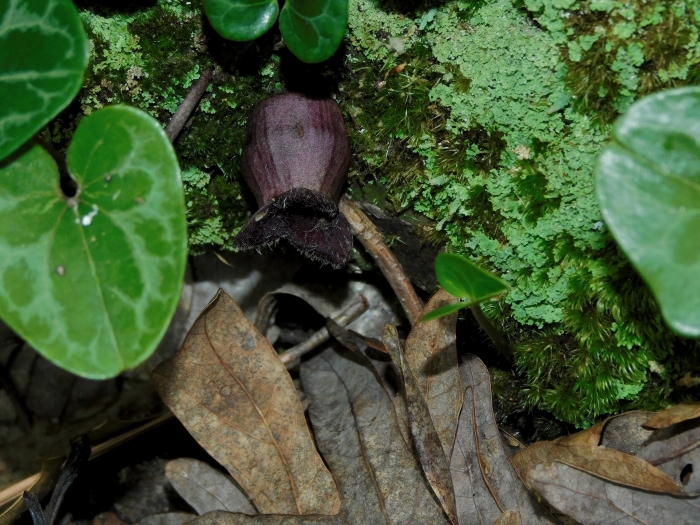Virginia Heartleaf
(Hexastylis virginica)
Virginia Heartleaf (Hexastylis virginica)
/
/

© Michael J. Papay
CC BY 4.0
Image By:
© Michael J. Papay
Recorded By:
Copyright:
CC BY 4.0
Copyright Notice:
Photo by: © Michael J. Papay | License Type: CC BY 4.0 | License URL: http://creativecommons.org/licenses/by/4.0/ | Uploader: mjpapay | Publisher: iNaturalist |

















Estimated Native Range
Summary
Hexastylis virginica, commonly known as Virginia Heartleaf, is a prostrate perennial herb native to the understory of deciduous and mixed forests in the southeastern United States, specifically from Maryland and Virginia south to North Carolina and Tennessee. It typically forms a low, ground-hugging mat with heart-shaped, evergreen leaves that provide year-round interest. The plant’s small, jug-shaped flowers are brownish-purple, emerging from April through June, and are often hidden beneath its foliage, which may limit their ornamental value but adds a subtle charm to its appearance.
Virginia Heartleaf is valued for its evergreen foliage, which provides visual interest in shaded garden areas throughout the year. It is commonly used as a ground cover in woodland gardens, naturalized areas, or shaded borders. This species prefers consistently moist, well-drained, humus-rich soils and thrives in part to full shade conditions. While it is not drought-tolerant, once established, it requires minimal maintenance. Gardeners should be aware that it does not tolerate wet soils in winter or excessive dryness in summer. There are no major disease or pest problems associated with Hexastylis virginica, making it a resilient choice for appropriate settings. However, it is not commonly found in the nursery trade and may need to be propagated by division or from seed by enthusiasts of native plants.CC BY-SA 4.0
Virginia Heartleaf is valued for its evergreen foliage, which provides visual interest in shaded garden areas throughout the year. It is commonly used as a ground cover in woodland gardens, naturalized areas, or shaded borders. This species prefers consistently moist, well-drained, humus-rich soils and thrives in part to full shade conditions. While it is not drought-tolerant, once established, it requires minimal maintenance. Gardeners should be aware that it does not tolerate wet soils in winter or excessive dryness in summer. There are no major disease or pest problems associated with Hexastylis virginica, making it a resilient choice for appropriate settings. However, it is not commonly found in the nursery trade and may need to be propagated by division or from seed by enthusiasts of native plants.CC BY-SA 4.0
Plant Description
- Plant Type: Herb
- Height: 0.5-0.6 feet
- Width: 0.5-0.6 feet
- Growth Rate: Slow
- Flower Color: Brown, Purple
- Flowering Season: Spring, Summer
- Leaf Retention: Evergreen
Growth Requirements
- Sun: Part Shade, Full Shade
- Water: Medium
- Drainage: Medium
Common Uses
Low Maintenance
Natural Habitat
Understory of deciduous and mixed forests in the southeastern United States
Other Names
Common Names: Arrowleaf Ginger
Scientific Names: , Hexastylis virginica, Asarum grandiflorum, Asarum macanthum, Asarum maculosum, Asarum memmingeri, Asarum virginianum, Asarum virginicum, Heterotropa virginica, Hexastylis memmingeri
GBIF Accepted Name: